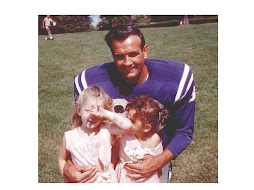A 49 year old woman came to my office last week with 5 years of debilitating headaches. Her neurological evaluation included an MRI which revealed a pineal region cyst. After several years getting interval MRIs focusing on this benign cyst until she took her care into her hands and sought the opinion of a neurosurgeon. I looked through her extensive catalogue of MRIs and could confidently reassure her that this cyst was not a worry and not the source of her headaches. She was relieved but asked the expected question, "Then what is causing my headaches?" I think I know but before I answer let me divert for a moment...
Pain-in its many forms and expressions-is probably the greatest challenge for physicians. You can't see it or touch it, there are no tests that reliably predict it or measure it (there are scales that are used but they remain completely subjective), and it is always a "symptom" rather than a diagnosis (think appendicitis as diagnosis/right lower abdominal pain as symptom OR brain tumor as diagnosis/headaches as symptom). Despite all this, pain is always real-one might complain more than another or let it interfere with life more but anyone who comes to my office complaining of pain IS REALLY experiencing pain. Because pain is the end product expression of many factors and modulations-both physical and psychological. And to date, science has failed us miserably in understanding the real mechanics of pain. Sure I could enumerate molecular knowledge about receptors, agonists, antagonists, signal transduction and the like but in the end, it wouldn't get any of us closer to understanding how and why patients suffer, how stress can bring on a headache or aggravate back pain, or how a wedding can temporarily halt longstanding cancer pain (as just a few examples of a myriad of pain enigmas).
Early in my career, I learned an invaluable lesson from an enormously gifted and talented plastic surgeon (who I count as both friend and mentor), Dr. Jane Petro. We were jointly running a peripheral nerve clinic and had to evaluate a patient with RSD (Reflex Sympathetic Dystrophy as it was known then, now referred to as Complex Regional Pain Syndrone-CRPS). After the patient left, she engaged the team in a discussion of a striking paper that demonstrated the very high correlation of RSD with abuse (both child and spousal abuse) (References below). The clear implication was that our life events clearly impact our response to injury and disease in ways that remain unknown to us. But while we may not understand the mechanism, it is evident that all health care providers have to more closely attend to understanding the lives of our patients in order to administer to their medical needs.
Which brings me to the Social History-probably the most under-rated component of a patient's history (beyond the perfunctory smoking, alcohol, and drug history). Despite the pressures and my role as a sub-specialist, I always ask a few questions about home, employment and background. At the least, I know a few things about my patient and it helps me view them as people (fathers, sisters, colleagues, etc.). And sometimes the information turns out to be critical for successful outcomes or interventions. For example, I recently performed a spinal fusion on a woman who was clearly in a threatening marriage and based on that information, I made sure she went to rehab post-op, even though she was likely medically well enough to go directly home.
So how does this all relate to my headache patient? Well, by just asking one simple question, she revealed a recent divorce after several years of a nasty separation. Clearly, her headaches were temporally related to the onset of marital strife. Trust me, this woman truly suffers from terrible headaches-they are real and life-altering, neither imagined nor exaggerated. How? I don't know. Why headaches and not some other complaint? I don't know. What is the best intervention now for this woman? I don't know.
But I do know, taking the Social History remains a critical component of understanding and providing the best care to our patients.
References:
Abuse-related injury and symptoms of posttraumatic stress disorder as mechanisms of chronic pain in survivors of intimate partner violence. - Wuest J - Pain Med - 01-MAY-2009; 10(4): 739-47
Prevalence of interpersonal abuse in primary care patients prescribed opioids for chronic pain. - Balousek S - J Gen Intern Med - 01-SEP-2007; 22(9): 1268-73
Sexual and physical abuse in women with fibromyalgia syndrome: a test of the trauma hypothesis. - Ciccone DS - Clin J Pain - 01-SEP-2005; 21(5): 378-86
Psychologic factors in the development of complex regional pain syndrome: history, myth, and evidence. - Feliu MH -Clin J Pain - 01-MAR-2010; 26(3): 258-63
Stern: Massachusetts General Hospital Comprehensive Clinical Psychiatry, 1st ed.; CHAPTER 82 - Domestic Violence
Katz: Comprehensive Gynecology, 5th ed.; Chapter 10 - Rape, Incest, and Domestic Violence



No comments:
Post a Comment